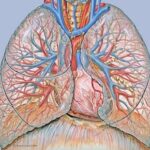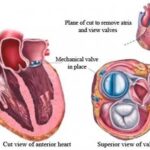People who have had surgery may experience a condition called atelectasis, which can last for several days after a surgical procedure. What is atelectasis – and should you be concerned if you have it?
What is Atelectasis?
Atelectasis is sometimes described as a “collapsed lung”, which isn’t entirely correct since it’s only the tiny sacs called alveoli that are deflated. When these small sacs don’t inflate as they should, gas exchange between the lungs and the bloodstream doesn’t occur normally. When normal gas exchange is hindered, carbon dioxide builds up in the blood and less oxygen enters the bloodstream. This leads to symptoms of shortness of breath, chest discomfort, rapid breathing, rapid heart rate, and, sometimes, a fever.
What Causes Atelectasis?
The most common time atelectasis of the lungs occurs is after surgery – particularly abdominal surgery. After a surgical procedure, most people breathe shallower – from the effects of anesthesia and because they’re in pain. This causes the alveoli to not inflate as well as they should. Some medications doctors give for pain after surgery also contributes to atelectasis – particularly sedatives and opioid-based pain medications.
Any type of shallow breathing for an extended period of time can cause atelectasis. This is why doctors and nurses encourage patients to breathe deeply and cough when they come out of surgery. Atelectasis after surgery is more common in older folks, obese people, and those who smoke.
Another Cause of Atelectasis
Sometimes lung atelectasis occurs because there’s a blockage in the bronchial tubes that lead into the alveoli. A blockage can come from a foreign body, blood clot, tumor, or inflammation. When air can’t move past the blockage, the alveoli beneath the level of the obstruction collapse – leading to atelectasis. Any time there’s an obstruction, there’s an increased risk of infection, which can be a complication of lung atelectasis.
Even babies can get atelectasis – especially pre-term ones. Premature infants may not have enough surfactant, a natural substance produced by the lungs to keep the alveoli open. This causes a severe form of atelectasis called respiratory distress syndrome. These infants usually need mechanical ventilation until their lungs mature and start producing more surfactant.
Treatment of Atelectasis of the Lungs
If atelectasis of the lung is caused by a blockage, efforts are made to remove the obstruction. If atelectasis occurs after surgery, deep breathing exercises, coughing, and using a small incentive spirometer for deep breathing helps to open up the collapsed alveoli. The quicker a patient gets up and around and off of pain medications, the faster their lungs will return to normal. If atelectasis is prolonged, the risk of infection in the lungs increases. One way to reduce the degree of atelectasis after surgery is to quit smoking.
What is Atelectasis: The Bottom Line?
Atelectasis is common after surgery, and the best way to treat it is to breathe deeply, cough, and walk as soon as possible.
References:
Merck Manual. Eighteenth edition. 2006.




